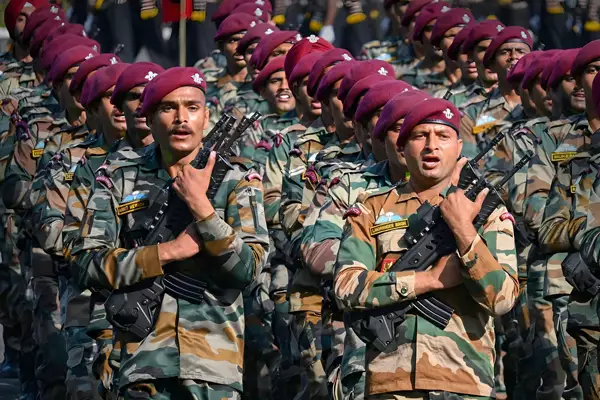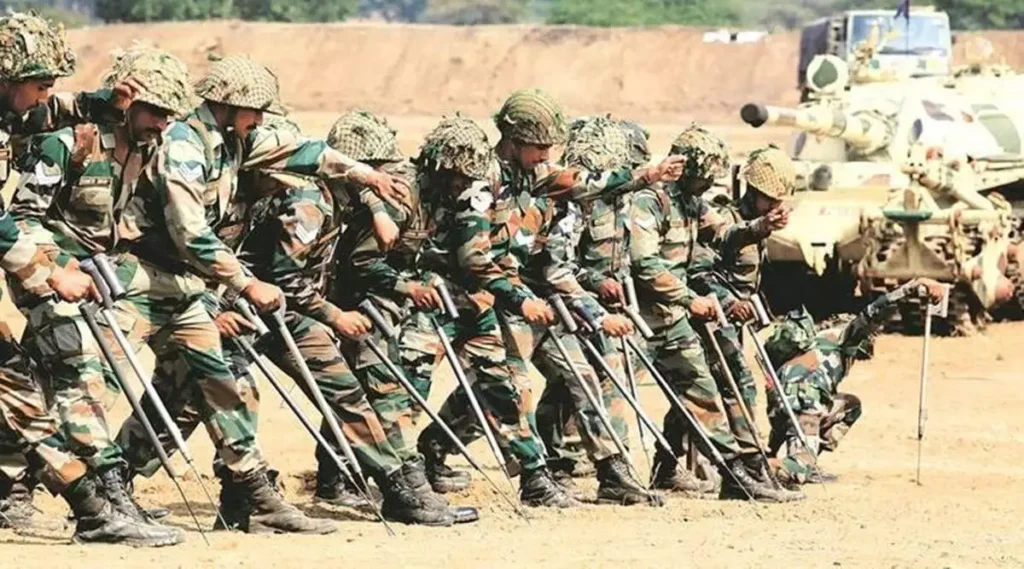The Indian Army is considering several substantial changes to the Agnipath Scheme following an internal survey of all three forces.
Table of Content
- What is the Agnipath scheme?
- How Agniveers will be selected?
- What benefits does an Agniveers gets?
- What are the benefits of Agnipath scheme?
- What are the concerns of the Agnipath scheme?
- Recommendations made on Agnipath Scheme by Indian army
- Conclusion
- Frequently Asked Questions (FAQs):
What is the Agnipath scheme?
- It aims to curb the increasing salary and pension bills that are increasing expenditure on the military and impacting military modernization.
- It was launched in 2022.
- Instead of permanent recruitment, soldiers called Agniveers are recruited for 4 years.
- After 4 years, only 25% will be allowed to continue for another 15 years under the permanent commission.
- It is also known as the Tour of Duty Scheme.
- Countries that follow similar schemes includes Russia, Israel, France, China, U.S.
How Agniveers will be selected?
- The age for new recruits is 17.5 to 21 years, and until 2026, only 1.75 lakh will be recruited.
- Agniveers will undergo training for 6 months, after which they will be deployed for the remaining 3.5 years.
- Recruitment standards will remain the same, and will be done twice a year through rallies.
- Training for Agniveers would be on a par with that of the regular armed forces cadres and would involve rigorous military exercises.
What benefits do an Agniveers get?
- The recruitment will be done only for the personnel below officer ranks (non-commissioned officers).
- The Agniveers can earn a class 12 certificate, Bachelor’s degree, skill certificates, etc.
- They will get monthly salary, death and disability compensation, and allowances, among others.
- 30% salary will be contributed towards Seva Nidhi programme, to which government will contribute an equal amount every month, and it will also accrue interest. This (~11 lakhs) will be given at the end of the four-year service.
What are the benefits of Agnipath scheme?
- Reduced budget: It will reduce the defence pension bill, which has a lion’s share in government budget. Defence pensioners form half of all Union government retirees.
- Lower age: The scheme will lower the average age of the armed forces from 32 to 26 years, similar to major armies worldwide.
- Better citizens: Youth with military ethos will be available in civil society that are well-disciplined and skilled.
What are the concerns of the Agnipath scheme?
- Discouragement: Agniveers will earn no pension, acting as a discouragement. Many youths view military recruitment as a path to economic stability & upward mobility.
- Poor quality of soldiers: The discouragement will demotivate youth to enter into defense forces, potentially reducing the quality of soldiers available with the nation.
- Shortage of personnel: In the ‘below officer’s rank’ category, especially in the Army. During COVID-19, there was no recruitment for over two and a half years, creating a deficiency.
- Unemployed: After 4 years of service, the candidates will again become unemployed. Unlike other government jobs, there will be no additional benefits that will be provided to the candidate.
- Quality of jobs: Given that the Agniveers have no pension or gratuity benefits, the scheme will further worsen the quality of jobs that are offered in India.
Recommendations made on Agnipath Scheme by Indian army:
- Increase Recruitment: Increase the number of recruits and the permanent recruitment percentage from 25% to at least 50%.
- Increase Age Limit: Raise the age limit for technical recruits from 21 to 23 years to attract more technically qualified individuals.
- Service Period Extension: Increase the service period from 4 years to 7-8 years.
- Disability Ex-gratia & Exit Management: Ex-gratia should be provided for disability during training and exit management should be handled by a professional agency.
- Subsistence Allowance: If an Agniveer dies in war, their family should receive a subsistence allowance.
Conclusion
The Agnipath scheme is a significant reform initiative launched in 2022 aimed at addressing the rising salary and pension costs in India’s military, which have been impacting its modernization efforts. By introducing a system of short-term recruitment, the scheme seeks to create a more youthful and dynamic armed force while managing long-term financial commitments. Overall, the Agnipath scheme represents a bold move towards a more modern and financially sustainable military structure. However, it also necessitates careful management of the transition and support mechanisms to address the concerns of those serving under this new framework.
Ref: Source
| UPSC IAS Preparation Resources | |
| Current Affairs Analysis | Topperspedia |
| GS Shots | Simply Explained |
| Daily Flash Cards | Daily Quiz |
Frequently Asked Questions (FAQs):
What is the Agnipath scheme?
The Agnipath scheme aims to reduce military expenditure by recruiting soldiers known as Agniveers for a limited term of 4 years, with the option for only 25% to continue for an additional 15 years under permanent commission.
When was the Agnipath scheme launched?
The Agnipath scheme was launched in 2022 as a way to address increasing salary and pension bills impacting military modernization.
What is the alternative name for the Agnipath scheme?
The Agnipath scheme is also known as the Tour of Duty Scheme, inspired by similar schemes in countries like Russia, Israel, France, China, and the U.S.
How long is the initial recruitment term for Agniveers?
Agniveers, the soldiers recruited under the Agnipath scheme, serve for 4 years before a selection process allows 25% to continue for an additional 15 years under permanent commission.
What is the recruitment age range for the Agnipath scheme?
The Agnipath scheme recruits individuals aged 17.5 to 21 years, with plans to recruit 1.75 lakh individuals by 2026 through rigorous training and military exercises.



